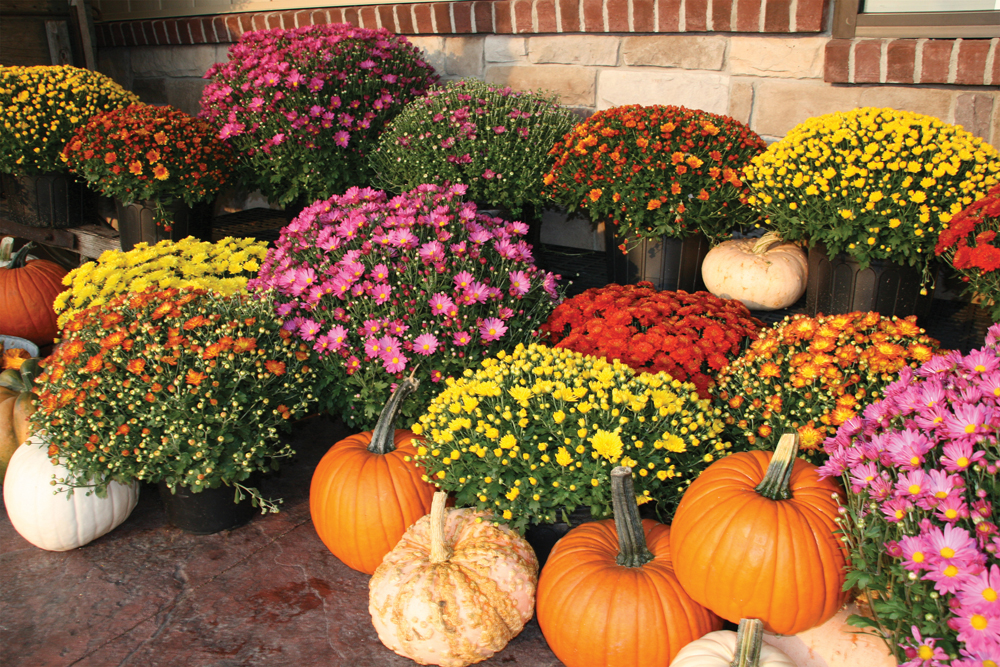
Fall, Autumn, pumpkins, gourds and colorful mums. Photo by istock.com/SheilaYarger

Chrysanthemums were aptly described by the title character in the 1969 film The Prime of Miss Jean Brodie as “serviceable flowers.” Mums, both annual and perennial, are easily propagated. They are also adaptable and long-lived, lasting at least two weeks in a vase. The cut flowers available year-round in the United States are grown mostly in South America and airlifted all over the world. In the Southern Hemisphere, they are synonymous with Mother’s Day. In the Northern Hemisphere, they are ubiquitous in the fall, lighting up the landscape.
Asian by birth, mums were cultivated in China as early as the 15th century B.C.E. In 910 C.E., the Japanese were so taken with the Chrysanthemum that it was adopted as that country’s national flower, as well as the crest and seal of the emperor. Centuries later, in the early 1800s, the Horticultural Society of London sent gardener John Damper Parks on a mission to China. After the failure of two previous expeditions, Parks triumphantly brought back 20 varieties of Chrysanthemums. Later, in 1860, famed plant explorer Robert Fortune found more varieties in Japan. Soon thereafter, the great gardens in Victorian England began featuring these autumnal beauties.
Chrysanthemums’ root systems spread slowly, and the potted varieties we purchase in the fall are frequently annuals. This is why so few of them become permanent residents in our Bloomington gardens—they do not establish a deep enough root system to persist before the onset winter. In order to ensure your mums return year after year, buy small perennial plants in the spring and grow them in a garden bed through the summer and into the fall. Be sure to water and fertilize them to encourage strong root growth. And pinch them back, starting when they are 6 inches tall and continuing until July 4. This will result in strong, vigorous plants that produce numerous flowers year after year. Soluble fertilizer delivered in the water bi-weekly will produce excellent results and a colorful fall garden. In subsequent years, transplant sections of your mum plants to other locations in early spring, increasing your floral repertoire at no cost.
Mums were brought here in 1798, so they have a good track record on this continent and are certain to repay any attention you lavish upon them. Just be sure to plant them early so they have time to settle in and become comfortable in your garden before it’s time for them to produce their floral display.












